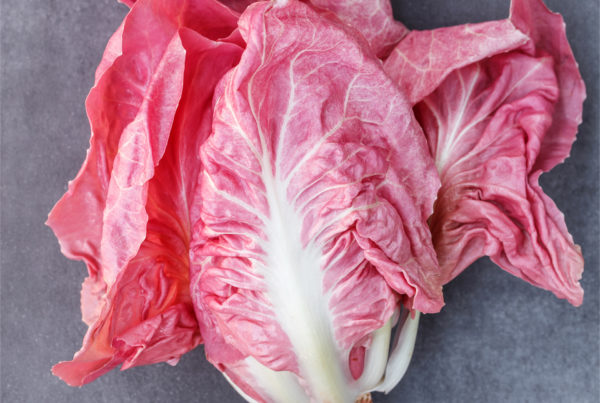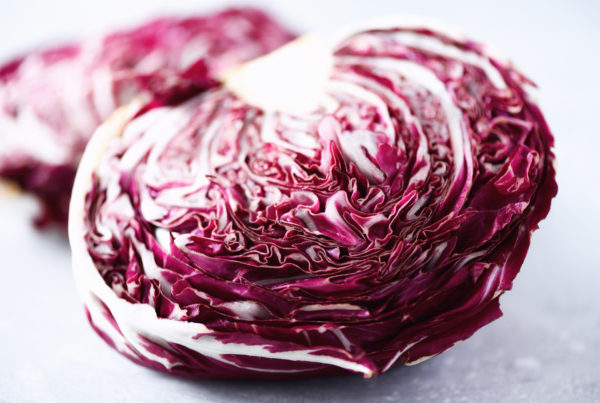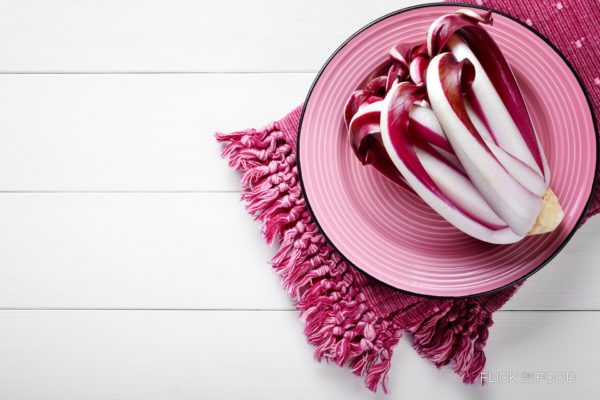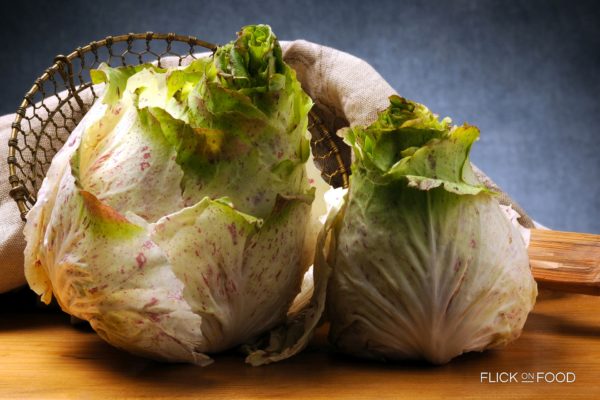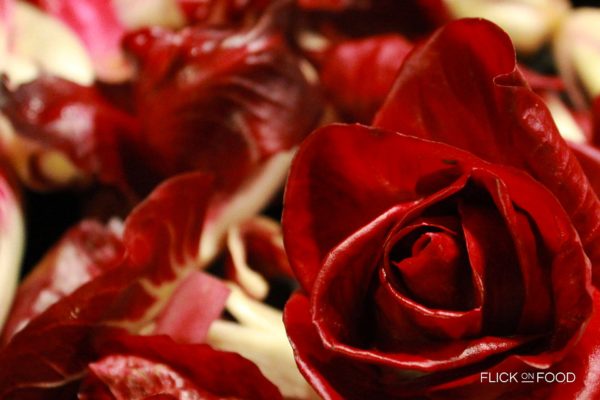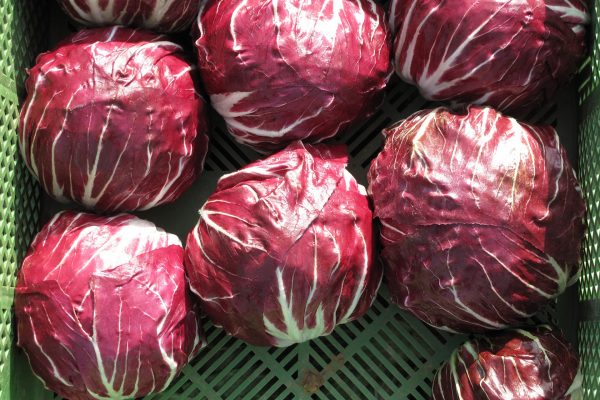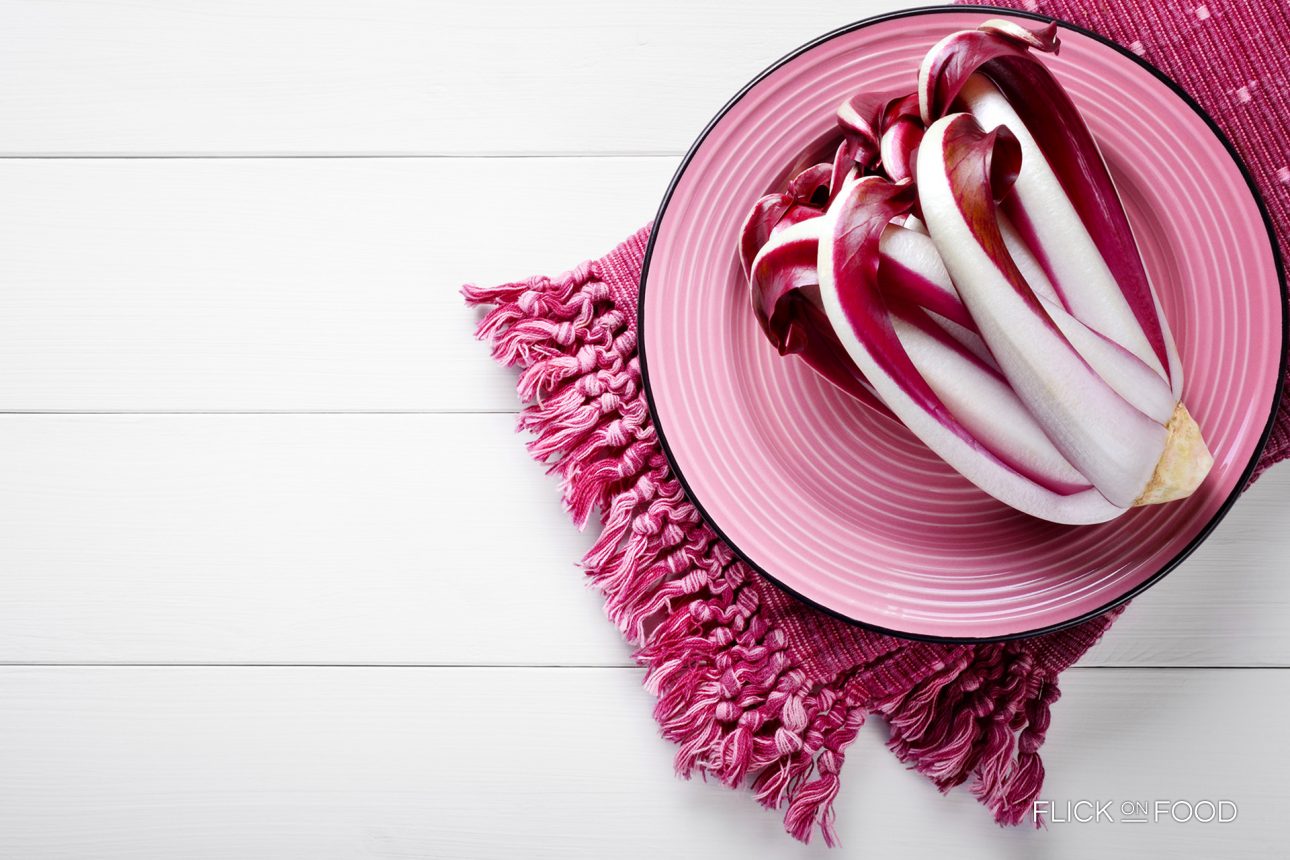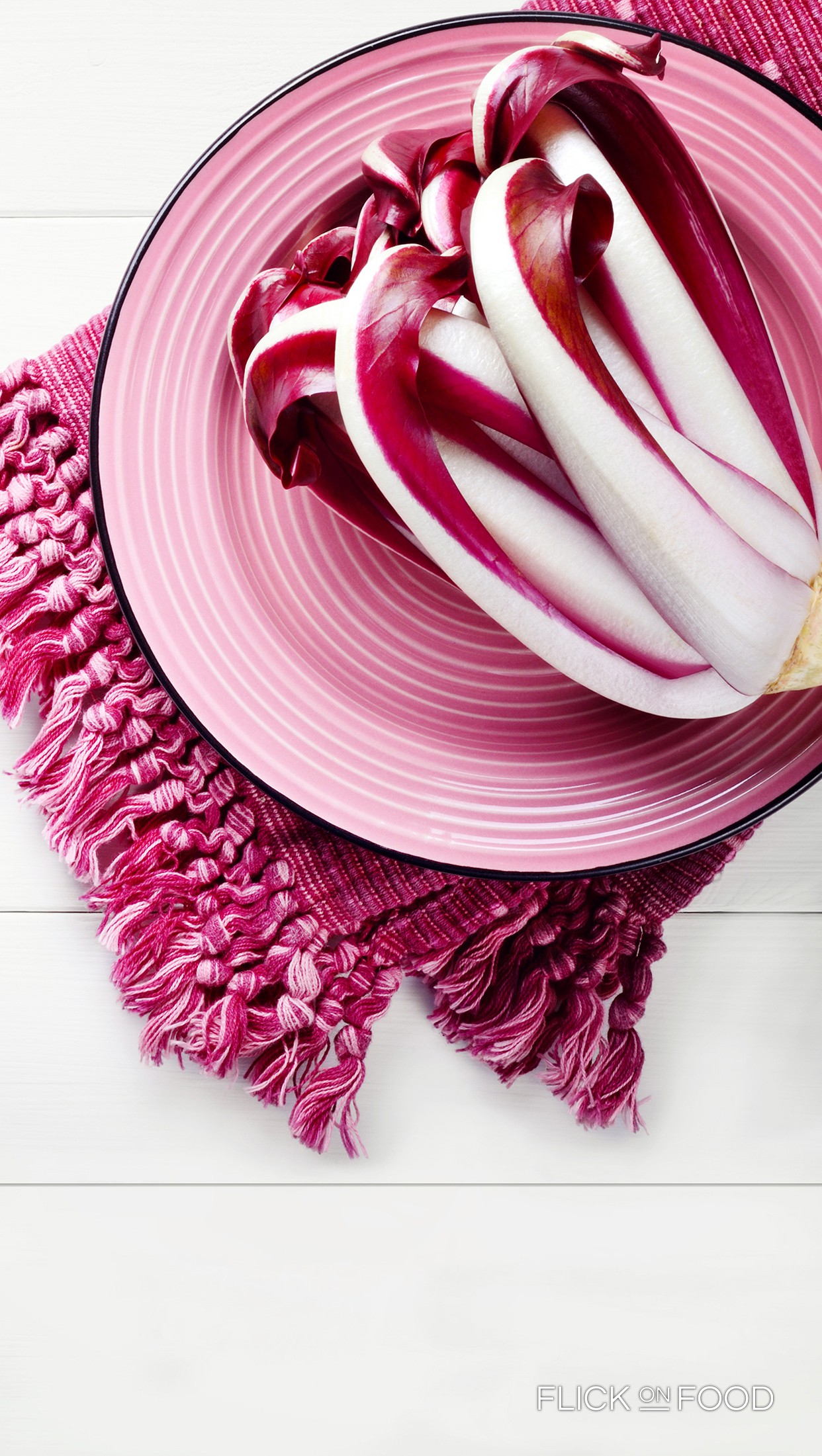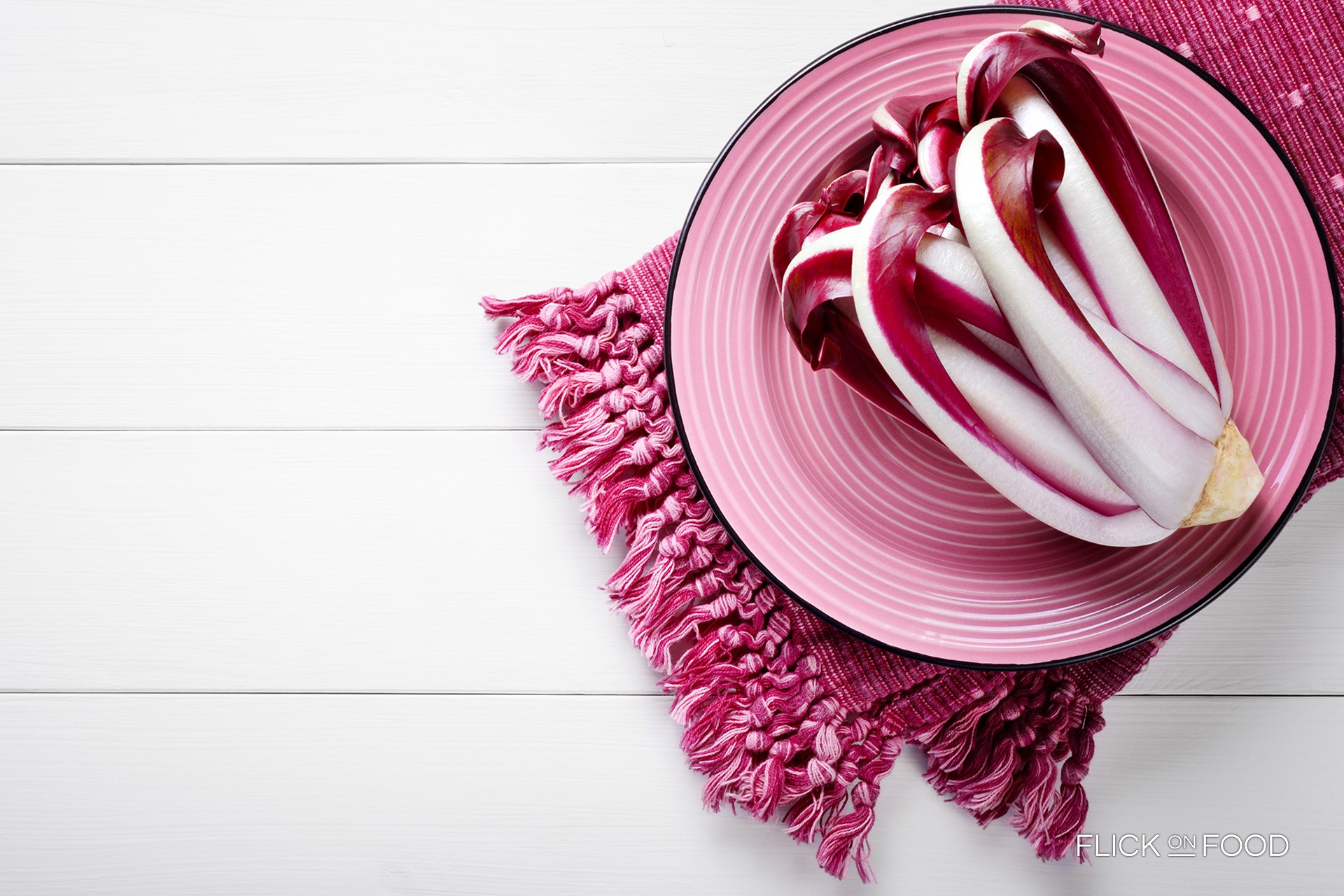
Also known as a “flower of winter”, its zesty flavor makes it great to eat raw.
Origin
Late season Rosso di Treviso radicchio or chicory has Protected Geographical Indication (PGI) status and can only be grown in certain areas. These include the countryside of 24 districts in Veneto, 17 in the province of Treviso, 5 around Venice and 2 in Padova. This product has strong regional ties, and is rich in history but with mysterious origins. Its red leaves can be spotted in mid-16th century paintings such as Leandro da Ponte’s Marriage at Cana, but the production process wasn’t well defined until the second half of the 19th century. Belgian gardener Francesco Van Den Borre brought a new technique to Treviso that was already in use in Belgium to whiten chicory. But it didn’t receive full recognition until 1900, when agronomist Giuseppe Benzi held an exhibition about the producers of Rosso di Treviso chicory.
Cookit
Crisp and slightly bitter, Rosso di Treviso chicory can be eaten raw in salads or grilled and drizzled with oil. It’s a versatile ingredient, and a natural antioxidant that’s perfect for meat or fish dishes, and even tasty desserts. First in its class is the famous risotto ‘alla trevigiana’, but it’s impossible to leave out bigoli pasta with chicory and crescenza cheese, or fresh Italian style crepes with chicory. Its leaves are great battered and fried, to serve as a starter.
Did you know
What makes this radicchio exceptional is the manual labor which goes into its cultivation. Especially the ‘forcing’ or whitening phase, which normally occurs in the first few days of November. How does it work? The chicory heads are picked and placed in pots of fresh spring water. After about 15 days, they are cleaned up and packaged. Their striking shape, with evenly spaced stalks that curl up into a point, all make for a unique ingredient.



